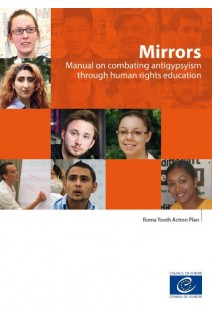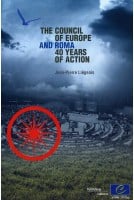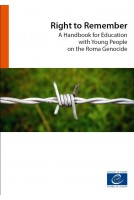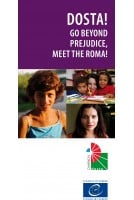



Everyday in Europe, people associated with Roma or Traveller communities are exposed to acts of discrimination and exclusion on a scale that has stopped shocking people and institutions. Too often, it is only when lives are claimed that we wake up to the persistence of realities that have no place in any democratic society.
Antigypsyism is a term used to refer to the multiple forms of biases, prejudice and stereotype that motivate the everyday discriminatory behaviour of institutions and many individuals towards Roma. Antigypsyism is a form of racial discrimination. Most antigypsyism acts are illegal and contrary to human rights, even when they are not prosecuted, and even if they are widespread and often ignored or tolerated. Antigypsyism undermines the moral fabric of societies. Democracy and human rights cannot take root where discrimination is institutionalised, tolerated or conveniently ignored.
Education plays a central role in combating and overcoming antigypsyism because the result of centuries of prejudice cannot be fought by laws and courts alone. Human rights education – learning for, through and about human rights – provides an ideal approach to raising awareness about antigypsyism and promoting a culture of universal human rights.
This manual was produced within the Roma Youth Action Plan of the Council of Europe to provide teachers, trainers and facilitators of non-formal education processes with essential information and methodological tools to address antigypsyism with young people of all ages and in any social-cultural setting. It is equally suitable for work with groups of non-Roma, Roma only, or mixed groups.
Combating antigypsyism is a task for all of us; learning about it is a necessary starting point.
As human beings we have the capability to discriminate and impose prejudice upon others. Fortunately, we are also capable to learn and change. Mirrors is a great help to help us notice this, correct distorted views and to recognise ourselves in the eyes of others.
Table of contents
1 Introduction
The Roma Youth Action Plan of the Council of Europe and combating antigypsyism
2 A guide to the manual
Scope of the work
Structure of the manual
Running the activities
3 Antigypsyism
’Gypsies’, Roma, and antigypsyism
Antigypsyism in practice
4 Human rights
Key facts about human rights
Human rights and the law
Three levels of protection
Key treaties
Using human rights in your work
5 Key Terms
6 Activities
Appendix I. Estimated Roma population in Europe
Appendix II. The European Convention on Human Rights and its protocols
Télécharger un extrait (1000)







Everyday in Europe, people associated with Roma or Traveller communities are exposed to acts of discrimination and exclusion on a scale that has stopped shocking people and institutions. Too often, it is only when lives are claimed that we wake up to the persistence of realities that have no place in any democratic society.
Antigypsyism is a term used to refer to the multiple forms of biases, prejudice and stereotype that motivate the everyday discriminatory behaviour of institutions and many individuals towards Roma. Antigypsyism is a form of racial discrimination. Most antigypsyism acts are illegal and contrary to human rights, even when they are not prosecuted, and even if they are widespread and often ignored or tolerated. Antigypsyism undermines the moral fabric of societies. Democracy and human rights cannot take root where discrimination is institutionalised, tolerated or conveniently ignored.
Education plays a central role in combating and overcoming antigypsyism because the result of centuries of prejudice cannot be fought by laws and courts alone. Human rights education – learning for, through and about human rights – provides an ideal approach to raising awareness about antigypsyism and promoting a culture of universal human rights.
This manual was produced within the Roma Youth Action Plan of the Council of Europe to provide teachers, trainers and facilitators of non-formal education processes with essential information and methodological tools to address antigypsyism with young people of all ages and in any social-cultural setting. It is equally suitable for work with groups of non-Roma, Roma only, or mixed groups.
Combating antigypsyism is a task for all of us; learning about it is a necessary starting point.
As human beings we have the capability to discriminate and impose prejudice upon others. Fortunately, we are also capable to learn and change. Mirrors is a great help to help us notice this, correct distorted views and to recognise ourselves in the eyes of others.
Attention, en vertu de nos conditions générales de vente, l'achat des PDF/epub est réservé aux particuliers.
